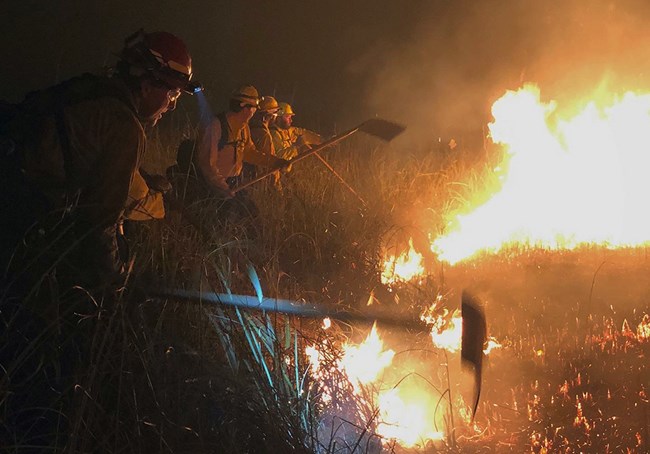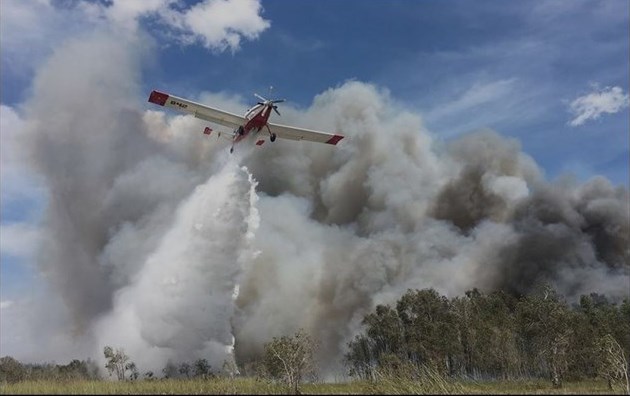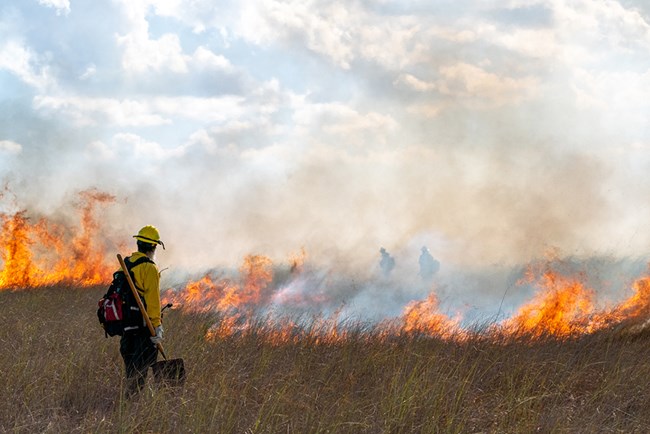Last updated: December 17, 2020
Article
The Frontline
By: Erika Hoopes, Wildfire Communication and Prevention, Everglades National Park

NPS-Michael Gue
In May 2020, Everglades National Park was in the height of fire season. South Florida was one of the first areas in the country to enter fire season following the COVID-19 pandemic declaration. The wetland sloughs dried up and the higher elevation tree hammocks had minimal moisture to protect them from wildfires. Staff responded to several large fires with the potential burn into communities and across major highways, mobilizing quickly to fight these fires, sometimes late into the night and for days at a time. Additional crews from multiple agencies were called in to assist.
To ensure continued safety of firefighters, Everglades Fire and Aviation, in coordination with local corporators, applied the most current COVID-19 CDC guidance to established staffing plans, mitigation measures for fire operations, and updates to fire suppression job hazard analyses (JHAs). Plans were evaluated and updated throughout the fire season. Mitigations included implementing virtual briefings, creating a virtual ICP and treating engine modules, aviation modules, and overhead as “family units” or “modules as one,” which separated resources to limit spread of any potentially exposed personnel. All worked hard to social distance and stay within their unit. This strategy was adopted in several other NPS units both in fire and park management operations as well.

NPS-Josh Pargas
Throughout the 2020 fire season, 19 wildfires burned nearly 60,000 acres in and around Everglades National Park. Several of these fires, the Narrow Ditch, Sunday Afternoon, Moonfish, and Guava Fire were large and complex. Everglades National Park joined forces with Big Cypress National Preserve on the cross-boundary human-caused Moonfish fire. All fires threatened valuable NPS and community resources including communities at risk, threatened and endangered species habitat, and significant archaeological and cultural sites. In addition, fire managers had heightened awareness and concerns with smoke impacts and potential respiratory health implications in local communities within Miami-Dade, Collier, and Broward counties, including the entire Miami metropolitan area, all of which were experiencing extremely high numbers of COVID-19 cases at the time. Despite the extreme dry conditions and potential for rapid fire growth, Everglades Fire and Aviation and partners aggressively suppressed all fires by heavily relying on aviation resources which kept fires relatively small and limited smoke impacts to surrounding communities.

Copyright: Ian Wilson Photography, used with permission.
During the 2020 fire season, as Everglades firefighters suppressed the wildfires, they were also preparing to conduct more prescribed fire operations. Despite the gravity of the pandemic, the life of a firefighter keeps moving.
